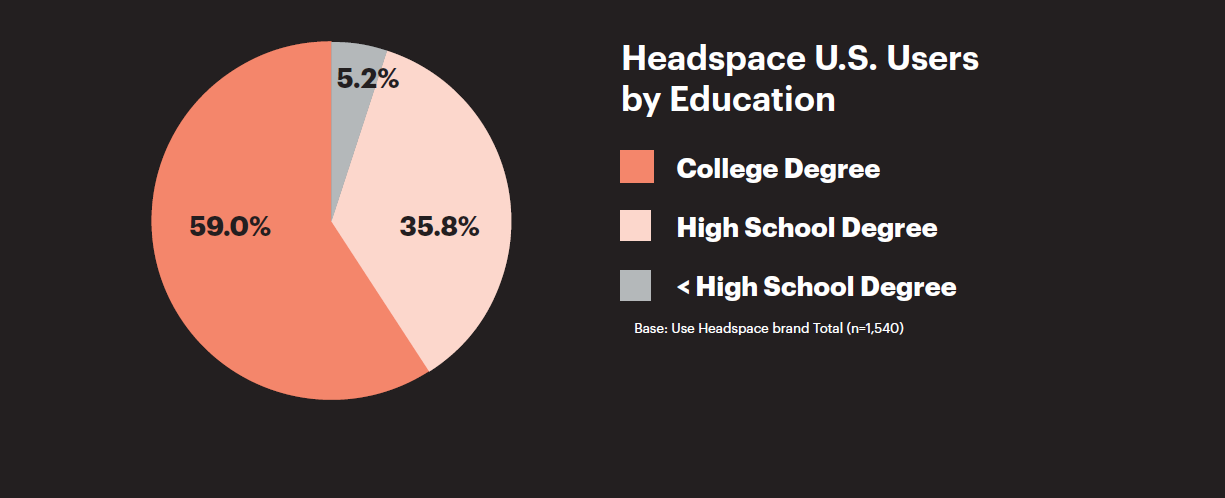Brief • 3 min Read

Between the COVID-19 pandemic, on-going cultural wars, and now a war in Europe, the last few years have put a strain on mental health globally. Apps that allow users to actively work on and improve mental health blossomed. This included the popular English-American meditation app Headspace.
Headspace guides users through mediations focused on improving mindfulness, sleep, and stress for $12.99/month or $69.99/year. When compared with the intimidating costs of a private therapy or meditation session, Headspace makes stress management more accessible to budget-conscious Americans.
Interestingly, those who could best afford private mental health services are also the most likely to use Headspace. Looking at Headspace data within QuestBrand, we can see the app’s user demographics. Data was collected from March 1, 2020 – March 8, 2022.
Want more insights into the health & personal wellness industries? Check out our report Health & Personal Care: An Industry Snapshot for industry and consumer trends.
More than 60% of the app’s U.S. users have household assets that exceed $99,999. And only about 20% of users have household assets below $50,000.

Similar to asset level, the bulk of Headspace’s users have a higher educational background. Fifty-nine percent of users report having a college degree.
While meditation and mindfulness practices may be more popular across more affluent and educated demographics, Headspace may want to consider actively marketing their app to less wealthy communities. While less familiar with mental health apps and available offerings, these are also often the demographics who could most benefit from the resources.

Subscribe for more Insights
Subscribe to our newsletter for the latest trends in business, politics, culture, and more.
Related Content








